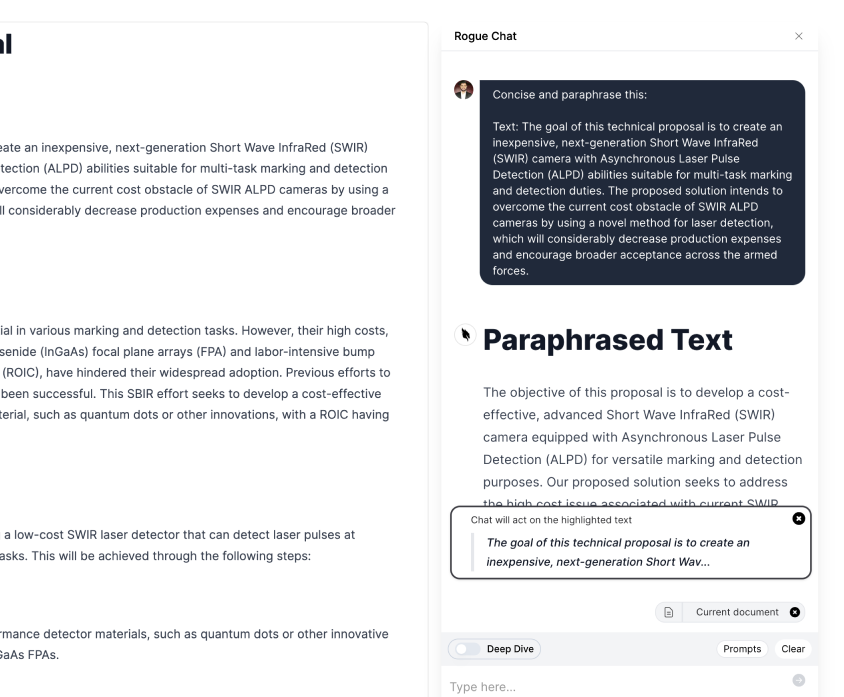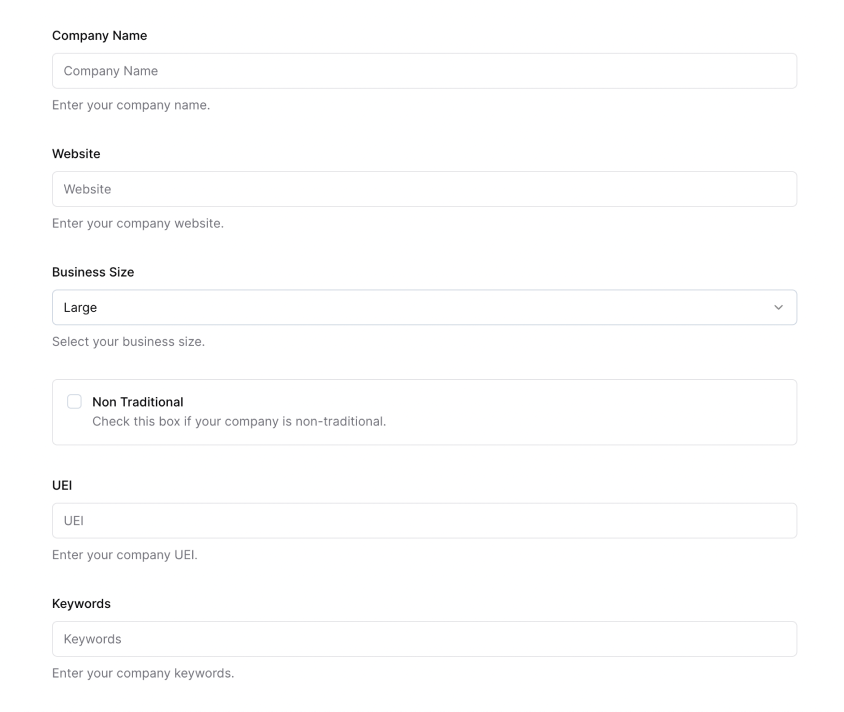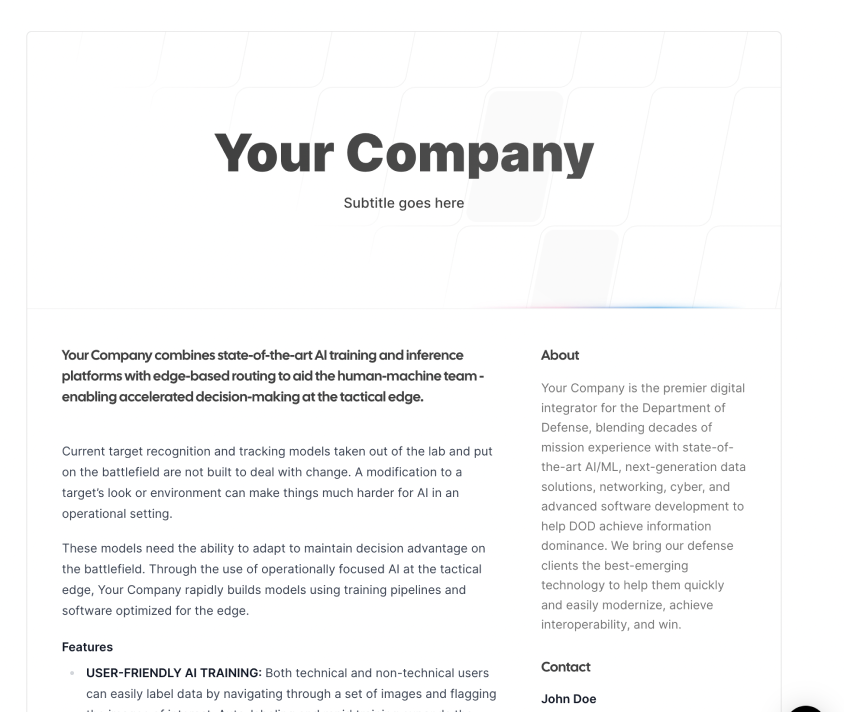
13.0 Simple Go to Market Strategy
Figuring out who you're selling to can be simple, but very hard.

Consider this, perhaps as the Cliff Notes version of How to Sell Tech to the government. We've had this conversation enough times that it seemed like a good idea to turn it into a picture.
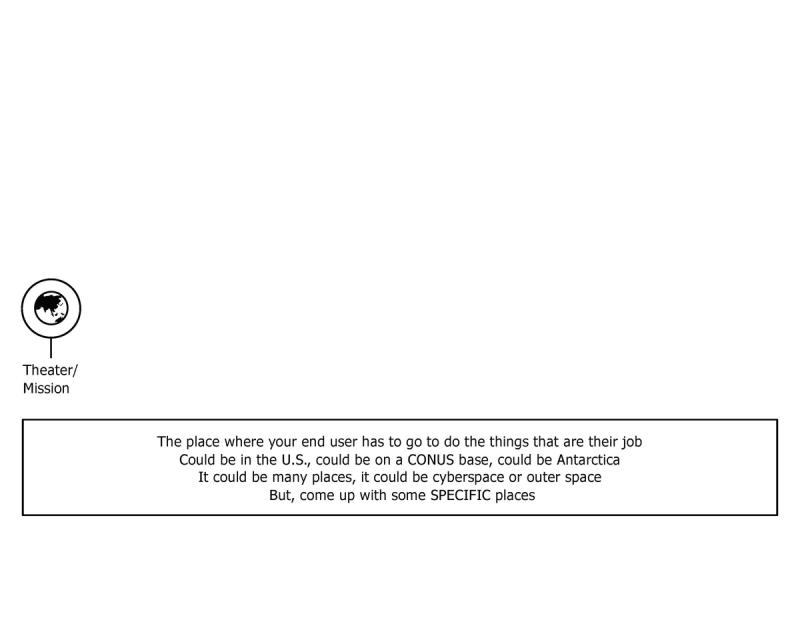
Fundamentally, the Department of Defense fights. They fight in places far and wide. Those places are covered by Combatant Commands. So, if you have a thing then it should be used in one of these "theaters".

Those theaters have "threats", think jammers in Ukraine in EUCOM, think Maritime Militia in the South China Sea in INDOPACOM, think narcotics smuggler semisubmersibles in the Gulf of Mexico in SOUTHCOM, think hackers in the electrical grid in CYBERCOM.
If there's no threat, then there's no need for your capes.
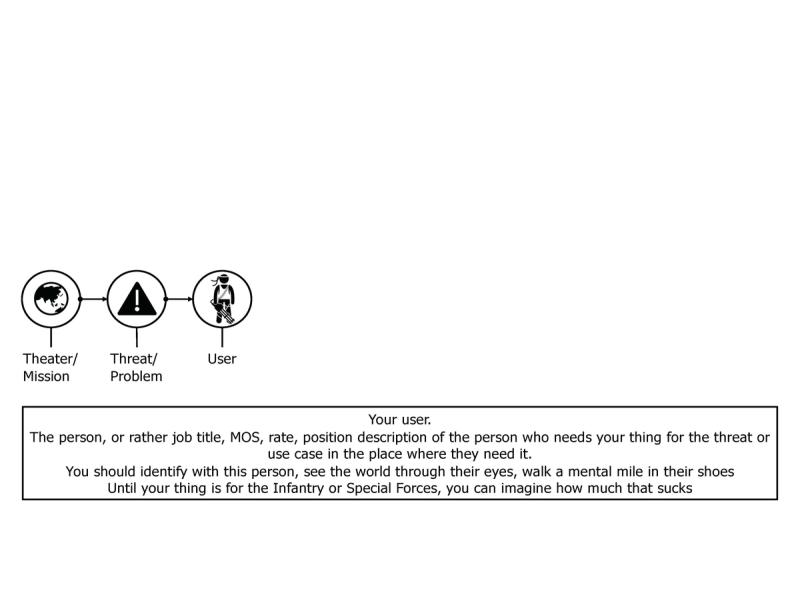
Your user, the person whom you can close your eyes, and see this person rationally using your thing to address said threat in said place.
This sounds simple, but lets be clear: a threat, from a theater, where your prospective user could conceivably be deployed.

That user, they have a job, a role, a duty description, you need to ensure that your envisioned usage of your thing by that person comports with their job. This may sound silly, again, but guess what, it's not.
The end user will tell you they want any number of things, that does not mean that they have any rational reason to actually use your thing. If it's not in their job description, then they can't use your thing over the long term.
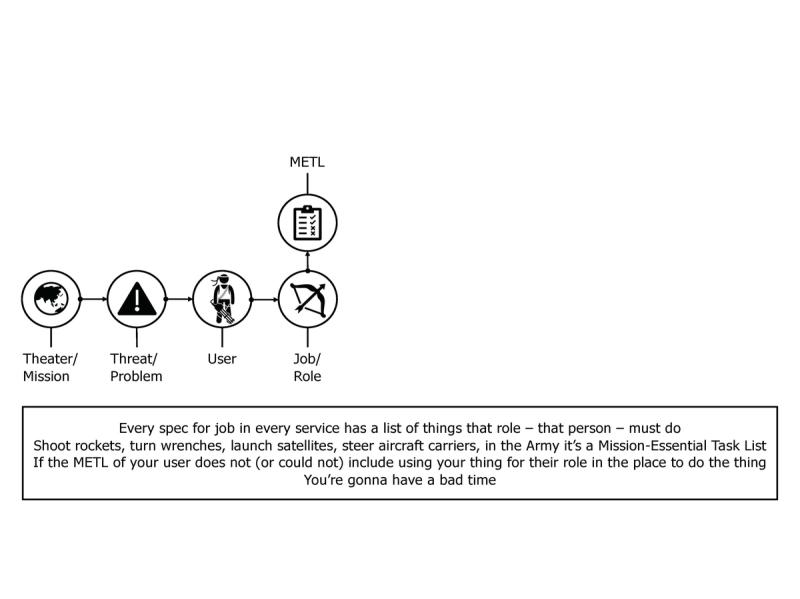
If you want to know if your user can use your thing, look up their job title, look of their mission essential tasks. The doctrine writers spend a lot of time writing this doctrine, maybe look it up.
Hot tip: if there's no doctrine around your user using a thing like your thing, someone is probably going to have to write it.
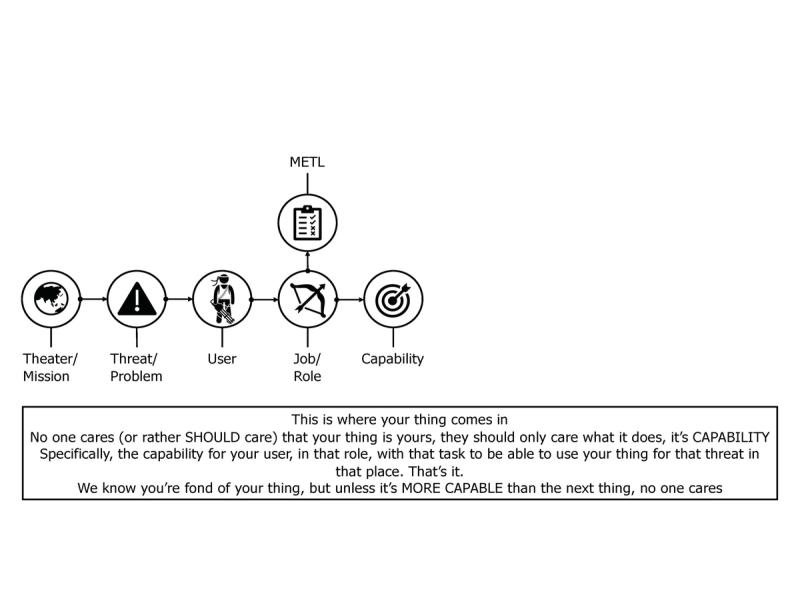
This is your thing, the capability, but don't think about what it IS, think about what is DOES.
Think about this: a user needs the capability to tie their horse to a post.
They could use a rope, a garden hose, or a length of high-grade fiberoptic cable. They each provide the CAPABILITY, one is just better suited than the rest. You want your capability to be the best suited capability.

How do you know if it's best-suited? Look at the requirements.
These are typically written down.
If there is no requirement for your thing, someone is going to have to write them, and wouldn't it be nice if the requirement basically described your product?
This is how the big primes win, it's not easy to get this done, but it is how big contracts are won.

Suitability, survivability, supportability, effectiveness, performance, these things are often tested before a thing enters real fielding, they're spec'ed out in requirements. There's a threshold (minimum) and an objective (maximum) on these measures, your thing should aim for the objective, obviously.

Never forget the incumbent, not least of which because there is a 60%+ incumbent bias in government contracting. The incumbent is the person who is currently selling to your customer.
If your thing is brand new and category-defining, the incumbents will, without a doubt come up with a competitive product.
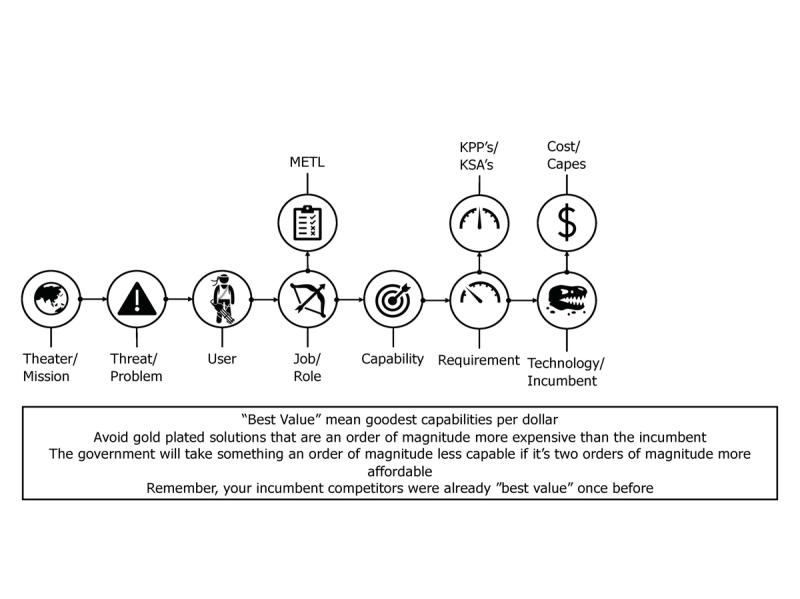
Those incumbents have already figured out product market fit and price to capability match.
That said, the government always wants BETTER, faster, AND CHEAPER.
If you can offer something a lot better for a lot cheaper, you have a shot
If you offer something not a lot better but a lot more expensive, you're dead in the water.
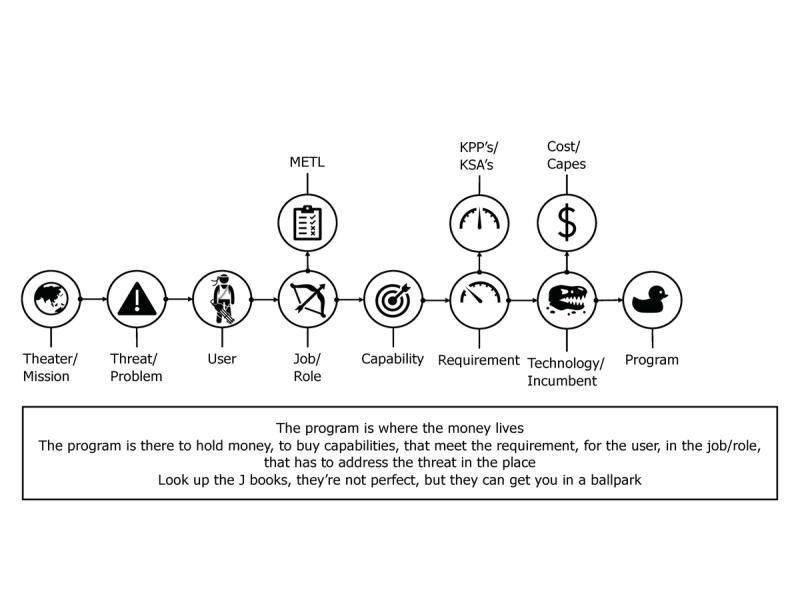
That capability, for which there is a requirement, it comes from a program where the money - which is tied to said requirement - lives. The money flows like milk and honey from the treasury, to program elements that feed the purchasing of these things.
If there is no program for your thing, or a program in which your thing can fit, then there's no money for your thing, that's how this works.
If you have to get DoD to build an entirely new program to buy your thing, you're looking at a 5-year process. Good luck.
Hot tip: find a program that could fit your thing, and pick an incumbent capability that you want to bump off.

Why? because that current program, with it's current money or "budget" COULD be spent on you, if you thing is BETTER AND CHEAPER than the incumbent.
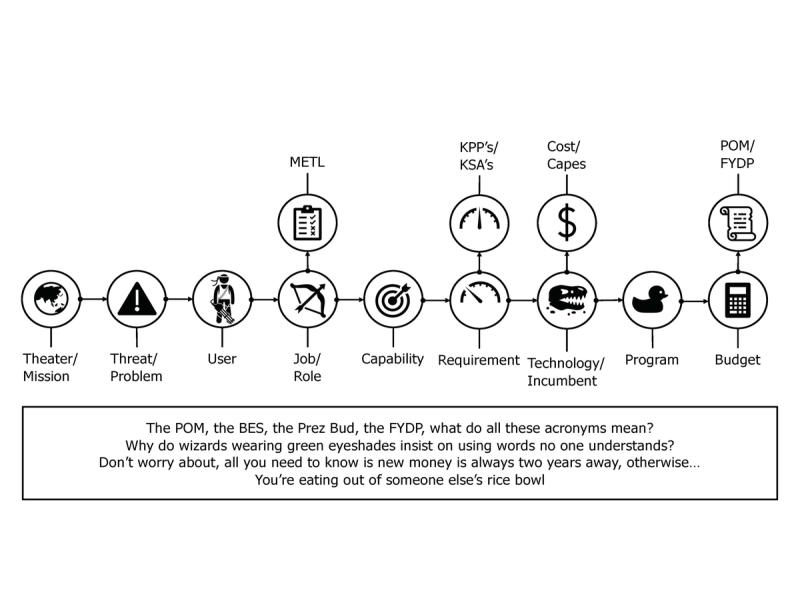
Want to know your TAM? Look at the POM for the PE's that feed that program, there's a ceiling amount for how much the Department is CURRENTLY willing to spend on that CAPABILITY.
You think you're gonna sell billions of dollars in product, but the J Book says millions in the PEs, good luck.
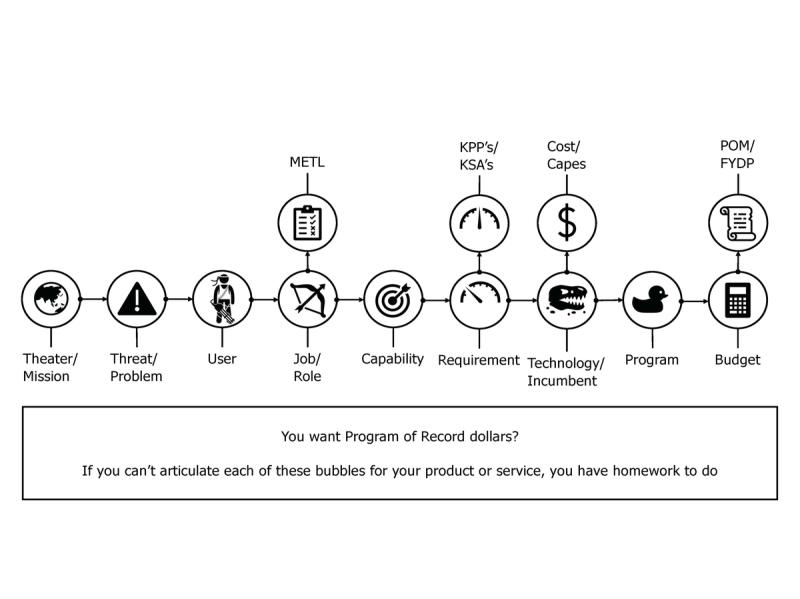
This seems simply, it's not, nor is it easy. This is the MINIMUM threshold for selling tech to the government. If you cant draw this line for your thing, then you might as well pack it in and start working on B2C SaaS, it'll be fashionable again soon.
Sign up for Rogue today!
Get started with Rogue and experience the best proposal writing tool in the industry.

